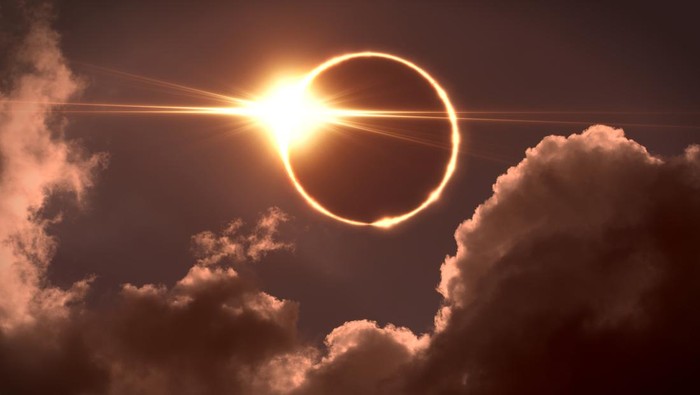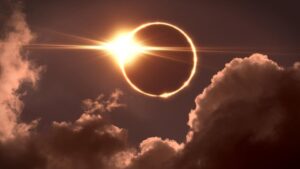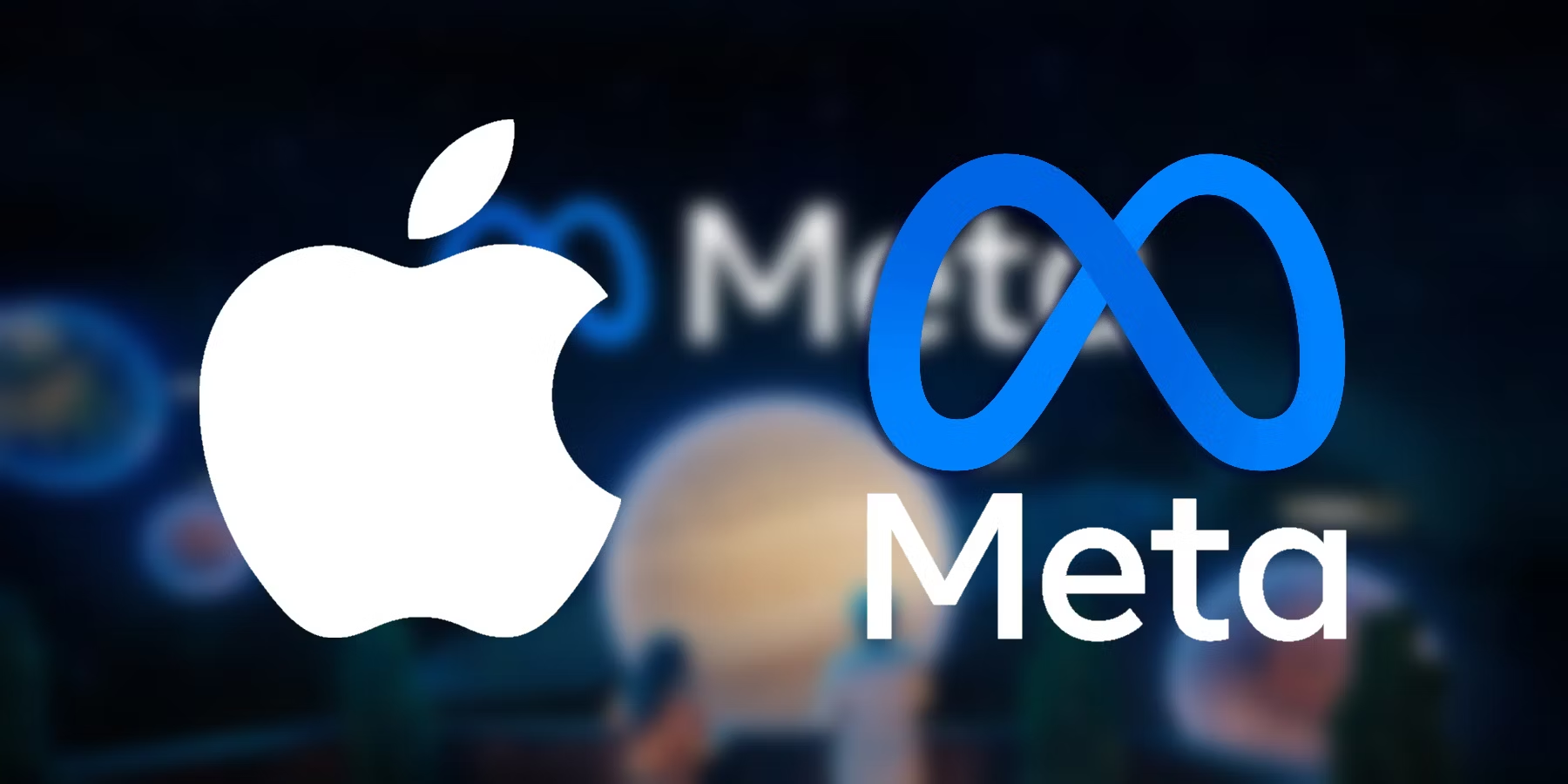

sumodiaper.com, Jakarta – Get ready to witness a celestial spectacle that will leave you in awe – the Total Solar Eclipse on 8 April! US citizens are buzzing with excitement as they eagerly anticipate this breathtaking event. Join the millions across the country who are gearing up to experience this rare phenomenon firsthand. Let’s dive into what makes this total solar eclipse so special and how you can make the most of it!
What is a Total Solar Eclipse?
A total solar eclipse is a rare celestial event that occurs when the moon passes between the sun and Earth, blocking out the sun’s light. This creates a shadow on Earth, temporarily turning day into an eerie twilight. It’s a mesmerizing display of nature’s power and precision.
During a total solar eclipse, the sky darkens, temperatures drop, and animals may exhibit unusual behaviors as they sense the sudden change in light. The sun’s corona becomes visible—a halo of ethereal light surrounding the moon—creating a breathtaking sight for those lucky enough to witness it.
This cosmic alignment is not only visually stunning but also scientifically significant. Researchers study eclipses to learn more about our solar system and universe, unlocking mysteries that have fascinated humanity for centuries.
Where and When Can You See It?
Curious about where and when you can catch a glimpse of the upcoming total solar eclipse on 8 April? This celestial event will be visible to viewers in parts of North America, including the United States. The path of totality, where the sun is completely obscured by the moon, will stretch across regions such as Texas, Oklahoma, Arkansas, Missouri, Illinois, Kentucky, Indiana, Ohio, Pennsylvania, New York State!
If you find yourself outside this path but still want to witness the magic of a partial solar eclipse – fret not! People across North America and even in parts of South America will be able to observe varying degrees of partial eclipses. Make sure your viewing location offers an unobstructed view of the sky – open fields or parks are great choices. Remember to use proper eye protection such as certified eclipse glasses or handheld solar viewers when looking directly at the sun during any phase of the eclipse. Stay informed about local times for maximum coverage in your area – it’s an experience you won’t want to miss!
Tips for Safely Viewing the Eclipse
When preparing to view the total solar eclipse on 8 April, it’s crucial to prioritize safety above all else. One essential tip is to never look directly at the sun without proper eye protection. Even during an eclipse, the sun’s rays can cause serious damage to your eyesight. To safely observe this spectacular event, consider using certified solar viewing glasses or handheld solar viewers that meet the necessary safety standards. Regular sunglasses or homemade filters are not sufficient for protecting your eyes from the intense sunlight emitted during an eclipse.
Another important aspect of safely viewing a solar eclipse is to avoid using cameras, telescopes, or binoculars without appropriate solar filters. The concentrated light can easily damage optical devices and pose a risk to your vision if not properly shielded. If you’re planning to photograph the eclipse with a smartphone, remember not to point it directly at the sun for extended periods as this may harm both your device and your eyesight. Instead, use a safe method like holding up a pair of solar glasses in front of the camera lens while capturing this celestial phenomenon in all its glory.
Cultural and Historical Significance of Eclipses
Eclipses have long captivated civilizations around the world, inspiring awe and fear in equal measure. In many ancient cultures, solar eclipses were seen as omens or messages from the gods, prompting rituals to ward off evil spirits. The alignment of celestial bodies during an eclipse was believed to hold great significance, influencing decisions ranging from battle strategies to agricultural practices.
Historically, eclipses played a role in shaping calendars and astronomical knowledge. The ability to predict these cosmic events marked a significant advancement in early societies’ understanding of the universe. From Stonehenge in England to Chichen Itza in Mexico, ancient structures bear witness to the importance placed on tracking celestial movements.
Across different cultures, myths and legends abound surrounding eclipses. Stories often depict cosmic battles between light and dark forces or explain temporary darkness as a sign of divine intervention. These narratives highlight humanity’s enduring fascination with celestial phenomena and our innate desire to imbue them with meaning beyond their scientific explanations.
Excitement Among US Citizens for the Upcoming Eclipse
The anticipation is palpable as US citizens eagerly await the upcoming total solar eclipse on 8 April. Social media buzzes with excitement, with people sharing plans and tips for viewing this rare celestial event. Families are making preparations to witness the spectacle together, creating lasting memories under the darkened sky. In cities and rural areas alike, individuals are counting down the days until they can witness the moon’s shadow sweeping across the sun. Some are traveling long distances to get a prime viewing spot, while others are organizing eclipse-watching parties with friends and neighbors.
Schools and educational institutions are incorporating lessons about eclipses into their curriculum, sparking curiosity and wonder in students of all ages. Scientists and amateur astronomers alike are gearing up their equipment for optimal observation during this unique cosmic occurrence. As the date approaches, excitement continues to build among US citizens who understand the significance of being able to witness such a rare phenomenon firsthand.
How to Make the Most of Your Viewing Experience
As you prepare to witness the awe-inspiring total solar eclipse on 8 April, there are a few key tips that can help enhance your viewing experience. Make sure you’re in the right location at the right time. Research where the eclipse will be visible and plan accordingly to get the best view. Consider investing in proper eye protection. While it may be tempting to look directly at the sun during an eclipse, doing so can damage your eyesight permanently. Opt for specially designed solar viewing glasses or create a pinhole projector to safely observe this natural phenomenon.
Additionally, try to find a peaceful and unobstructed spot from which to watch the eclipse unfold. Whether you’re in your backyard or at a designated viewing area, being surrounded by nature’s beauty can elevate the experience. Remember to fully immerse yourself in the moment. Put away distractions like phones and cameras for a few minutes and simply marvel at the wonder of our universe as day turns into night momentarily before your eyes.
Conclusion
The total solar eclipse happening on 8 April is a celestial event that has captured the excitement and anticipation of people across the United States. As we gear up to witness this awe-inspiring phenomenon, let us remember to prioritize safety by using proper viewing equipment and taking necessary precautions. Whether you are an avid sky-watcher or simply curious about experiencing this rare event, make sure to mark your calendars and find a suitable spot with an unobstructed view of the sky. Let’s all come together under the darkened skies to marvel at the beauty and wonder of nature during this unforgettable total solar eclipse on 8 April.







